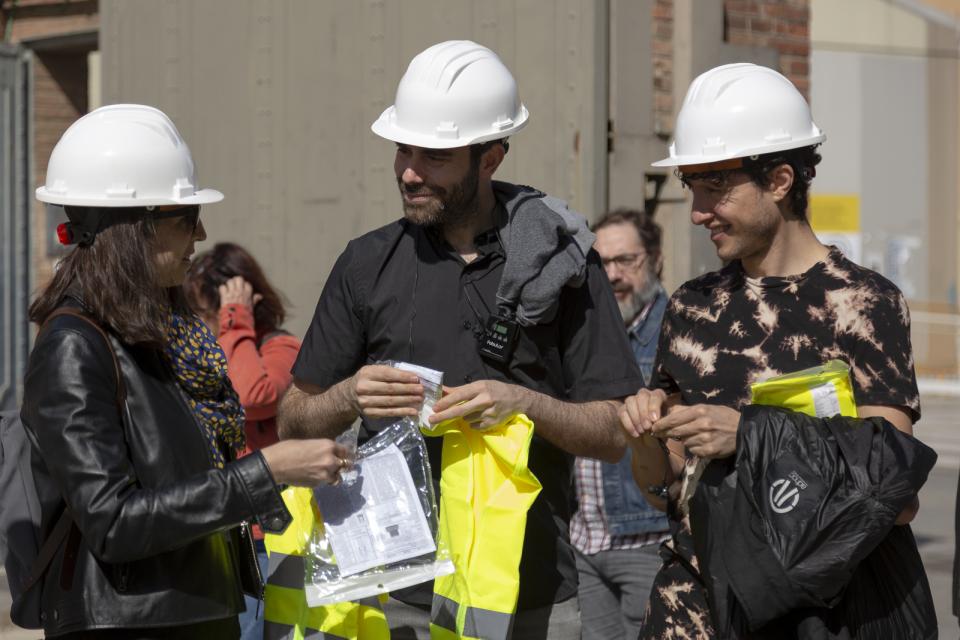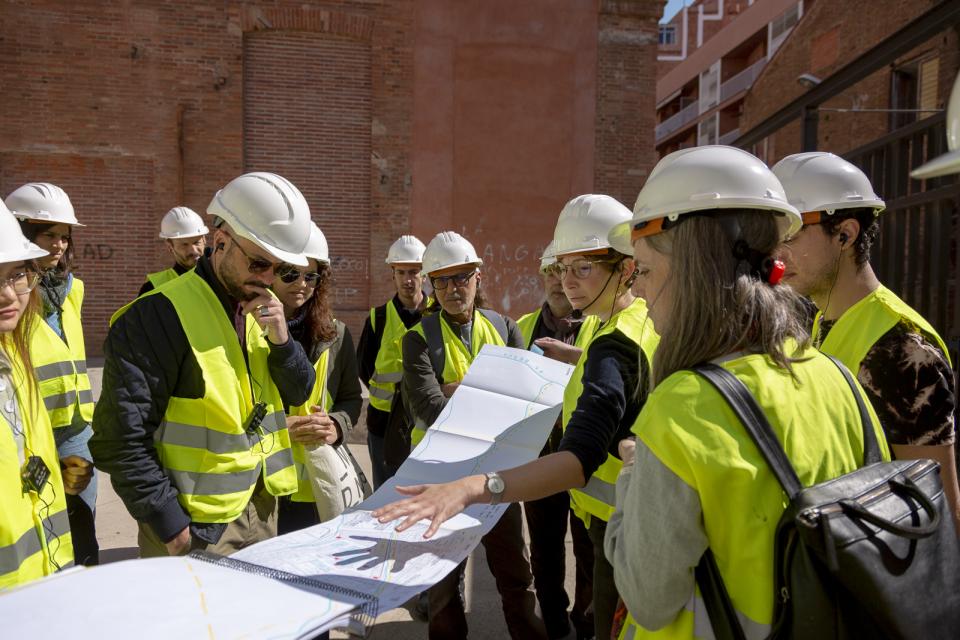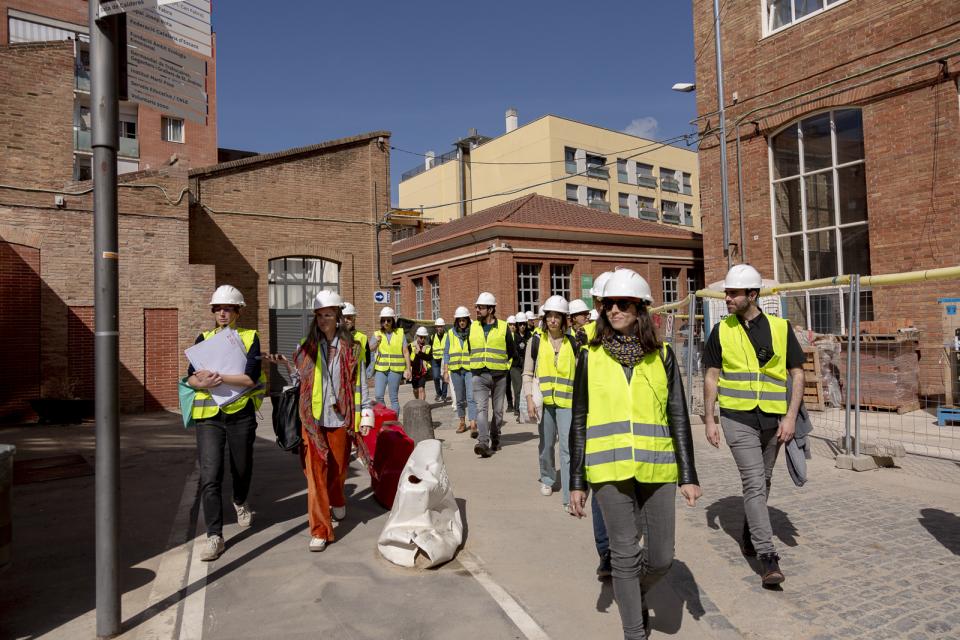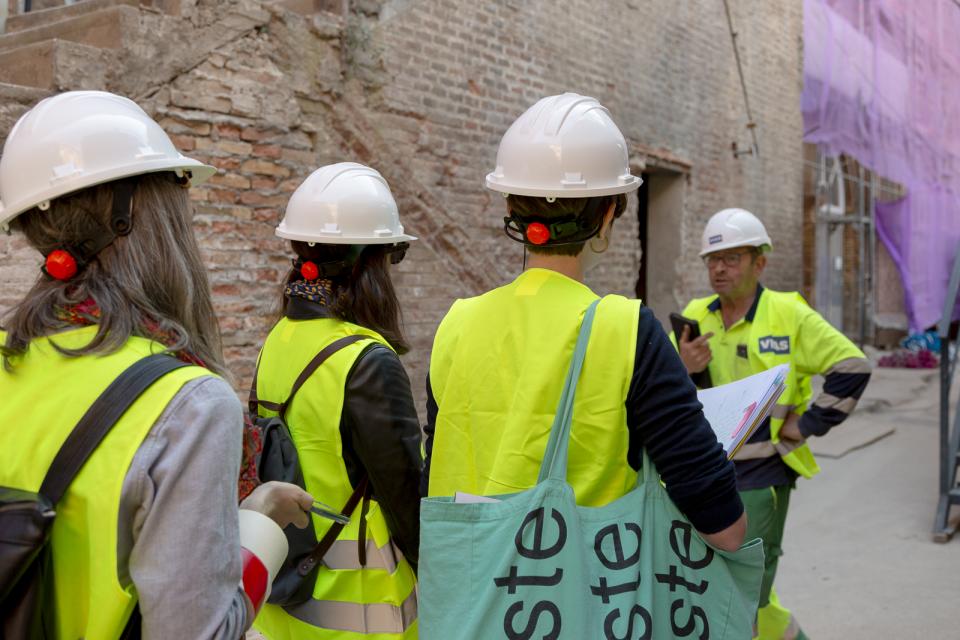'Site Visit', by Anna Dot
Anna Dot focuses her practice on the study of translation and communication processes, paying special attention to the acts of reading and writing beyond linguistic boundaries. Her artwork is often based on literary references and has a strong text component.
For Uncomfortable, the artist proposes adding another layer to this noise by installing a canvas on the fences that enclose the construction site, in front of the old Art Centre building. A canvas with a text where we can read the sound produced by the works, in other words, a sound layer that is at the same time silent. Thereby, without onomatopoeia, rather with a certain poetics, Llaneli bestows it with literature, as if it were a Barthesian myth.
The Bible explains that God punished man for having dared to build a tower that reached heaven. As punishment, He gave them different languages, so that they would never be able to agree and the Tower of Babel could never be finished. From that chaos, and to combat it, they say translation was born. Today, as Amador confirms, spaces under construction continue to be a context of confusion, a zone of translation. First of all, because of the diversity of languages of the people who work on sites but also because of the signs used to mark the interventions outside, which do not follow any unified system.
For Dot, the human ambition that is at the origin of the Tower of Babel project is perhaps, today, what has led us to build a complex physical and digital architecture on a global scale that allows us to sustain the virtual cloud. A cloud, we are told, that contains all the knowledge in the world and is even capable of automatically translating every language, generating texts and creating images.
Foundation is synonymous with evidence. And works are annoying until they are finished. But what if they were never finished? What certainties are given by something incomplete? What do things that remain open prove? The waiting, vagueness and uncertainty of the works meet with the potential of an undefined space, everything that the unfinished proposal of a new place can become. A temporal indeterminacy that finds its spatial translation in phosphorescent marks that few people understand.
Drawing on Athanasius Kircher's study of the Tower of Babel, Pieter Brueghel the Elder's depiction of the Tower of Babel, biblical texts and Amador’s comments, Anna Dot ironically uses AI to represent the confusion and chaos still inevitable in our unstoppable quest for total translation, for universal understanding.
------
Anna Dot (Vic, 1991) is an artist and professor and has a PhD in Translation, Interpreting and Applied Languages from the University of Vic (2019). She is represented by Bombon Projects gallery in Barcelona and her work has been shown in national and international contexts, in exhibition rooms and at art interventions in specific spaces, such as the Walter Benjamin Route (2016, Banyuls-Sur-Mer to Portbou), the transhumance paths to the valley of La Santa Creu (2020) and the fort of Gósol (Festival Errant 2022). Recently, she obtained a grant for a four-month residency at the Cité internationale des arts in Paris.







